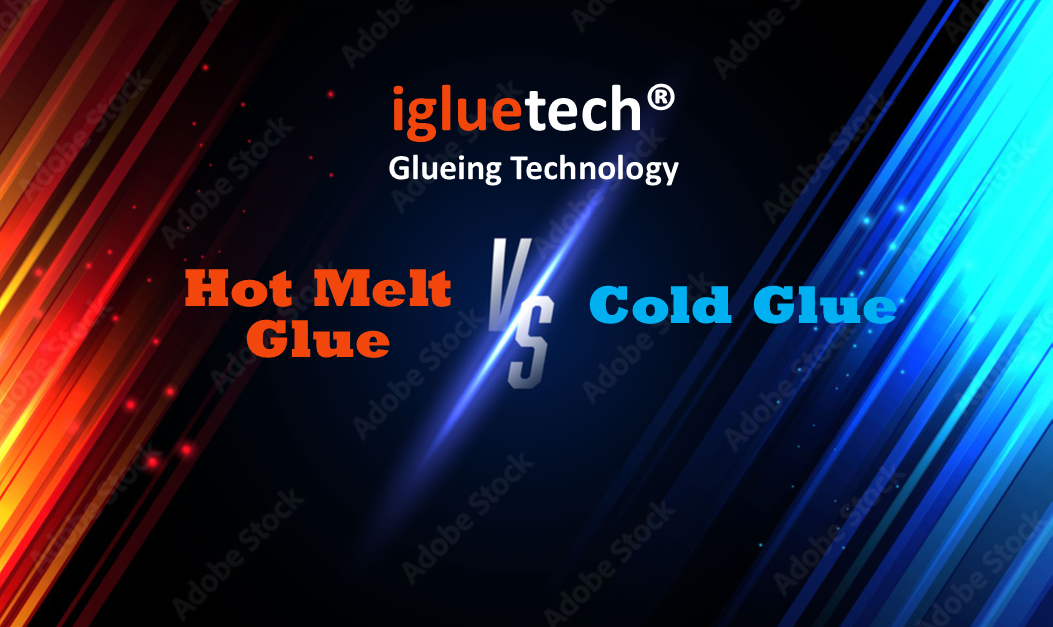When it comes to adhesive applications in various industries, two common methods stand out: hot melt glue and cold glue application. Each has distinct properties, and the choice between them depends on factors such as the materials being bonded, the speed of the process, and the required strength of the bond. This blog will explore the key differences between hot melt glue and cold glue, along with the advantages each type offers.
Hot Melt Glue Application
Hot melt glue is an adhesive that is applied in a molten state. It is typically made from thermoplastic materials, which are heated to a liquid state and then applied to surfaces. As the glue cools, it solidifies, creating a strong bond. Hot melt glue is used in a variety of applications, from packaging and woodworking to automotive and electronics industries.
Advantages of Hot Melt Glue:
- Fast Bonding Time: One of the primary advantages of hot melt glue is its quick bonding time. Once the adhesive is applied, it begins to cool and set almost immediately, which is beneficial in high-speed production environments. This fast-setting nature allows manufacturers to increase throughput and efficiency.
- Strong Adhesion: Hot melt glue forms a durable bond that is resistant to water, chemicals, and temperature changes. This makes it ideal for applications where the bonded materials will be exposed to challenging conditions.
- Versatility: Hot melt glue can bond a wide range of materials, including paper, cardboard, wood, plastic, fabric, and metal. This versatility makes it a popular choice across different industries.
- No Solvent Use: Unlike some adhesives that rely on solvents to maintain their liquid state, hot melt glue does not contain solvents. This makes it a more environmentally friendly option and eliminates the need for ventilation during application.
- Long Shelf Life: Since hot melt glue is solid at room temperature, it has a long shelf life, which reduces waste and lowers overall costs.
However, there are some limitations to hot melt glue. It requires a hot melt glue application system to heat and apply, and the adhesive can degrade if exposed to high temperatures for too long during storage or application. Additionally, it may not be suitable for applications where the bonded materials will be subjected to extreme heat, as the adhesive can soften.
Cold Glue Application
Cold glue, also known as liquid adhesive or PVA Glue, is typically water-based and is applied at room temperature. This type of glue is used in a wide range of industries, including packaging, labelling, and paper converting.
Advantages of Cold Glue:
- Strong Bonds for Porous Materials: Cold glue excels at bonding porous materials, such as paper, cardboard, and fabric. The liquid nature of the glue allows it to penetrate the fibers of the material, creating a strong and lasting bond.
- No Heat Required: Since cold glue is applied at room temperature, it does not require any heating equipment. This makes the application process simpler and less expensive, as well as safer for operators.
- Eco-Friendly Options: Many cold glues are water-based, which means they are free from harmful solvents and have lower VOC (volatile organic compounds) emissions. This makes them a more environmentally friendly option and safer for use in industries that prioritize sustainability.
- Flexibility: Cold glue tends to remain more flexible than hot melt glue after drying. This can be beneficial in applications where the bonded materials need to maintain some flexibility or movement.
- Cost-Effective: Cold glue is often more cost-effective than hot melt glue, particularly in applications where large amounts of adhesive are required. Since no heating equipment is needed, energy costs are also reduced.
However, cold glue has its limitations. It typically has a longer setting time compared to hot melt glue, which can slow down production. Additionally, cold glue may not perform as well in environments with high humidity or moisture, as water-based adhesives can lose their bonding strength in such conditions.
Conclusion
Both hot melt glue and cold glue have their own distinct advantages, and the choice between them depends on the specific needs of the application & production environments. Hot melt glue is ideal for fast, strong bonds in high-speed production environments and is highly versatile across various materials. On the other hand, cold glue is more suitable for porous materials, eco-friendly applications, and cost-conscious operations. Understanding the differences between these adhesive technologies allows manufacturers to select the best solution for their specific bonding requirements.
igluetech® supply UES Hot Melt Systems & Graco InvisiPac equipment for Hot Melt Glue Applications & Zator Glueing Systems for Cold Glue Applications along with the Hot Melt & Cold glue adhesives itself.
If you require new glue application equipment or adhesives, contact our iglue® application specialists for more information.
